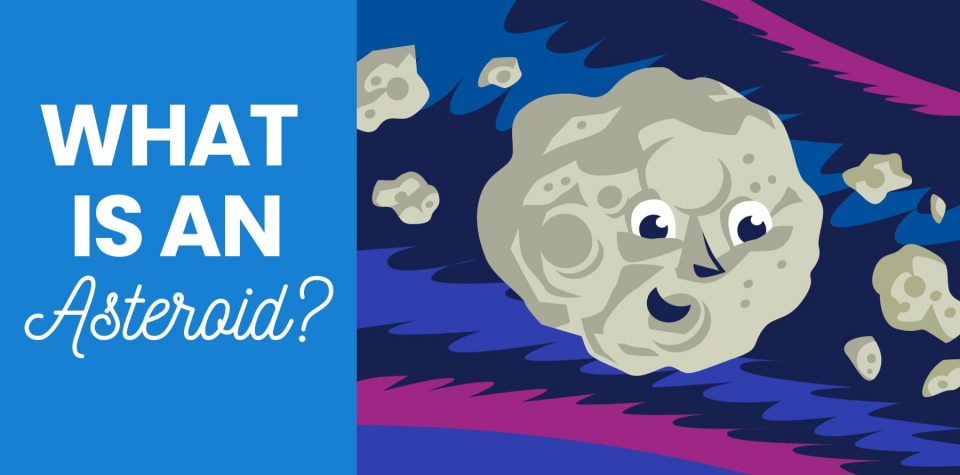
What Is an Asteroid?
Looking to travel out of our solar system on the way to a far-off planet? You’ll need to avoid crashing into any asteroids on the way there. Otherwise you’ll have a much shorter trip than you planned for!
But what exactly is an asteroid? It’s a rocky or metallic object in space that circles the Sun. Asteroids are what’s left of the material that made all the planets in the solar system billions of years ago. They can be very different. Some are hundreds of miles wide, while others are smaller than a football field. Sometimes they’re round, and sometimes they’re not. Some of them spin and rotate, while others drift calmly through space. A few of them even have moons!
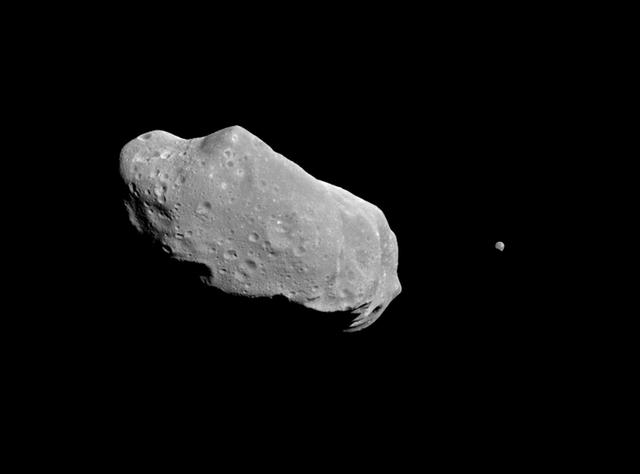
There are a whole lot of asteroids in the solar system. Scientists have discovered over a million, according to NASA, and they think there are many more we haven’t seen yet. But asteroids are so much smaller than planets that they don’t take up that much space.
Imagine our solar system as a table full of desserts. The Sun would be a giant bowl of pudding, so big that a person could barely carry it. The planets would be cookies, with Earth being a smallish one. And the crumbs scattered all across the table would be asteroids.
How Do Asteroids Form?
Asteroids form the same way planets do. In the early years of our solar system, lots of small lumps of rock and metal were floating around. When they bumped into each other gently, they stuck together to make a new, larger lump. That lump had stronger gravity, which attracted more pieces of rock and metal, so the lump kept growing. Most of these early lumps of rock and metal grew and grew until they became planets. The pieces that didn’t become part of a planet turned into asteroids.
What Are Asteroids Made Of?
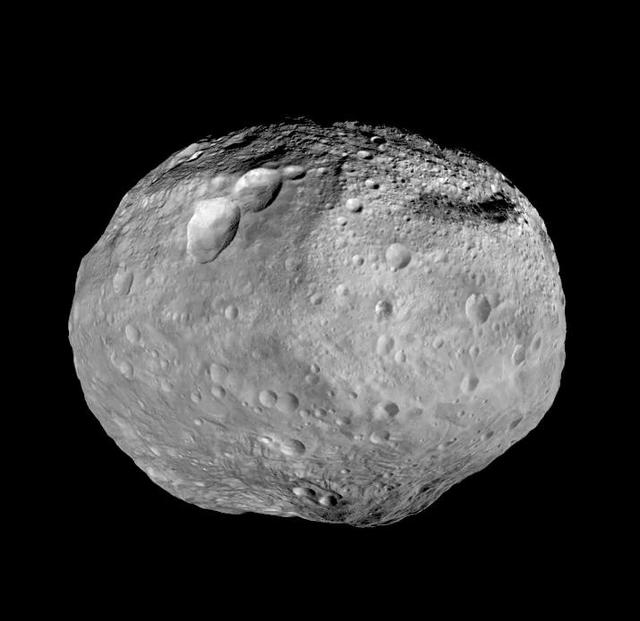
Each asteroid is made of different materials depending on how far away from the Sun it was when it formed. If it was close enough to the Sun, it got so hot that it melted partway, which made anything heavy in it, like metal, sink toward its center. At the same time, melted rock, which is lighter than metal, floated to its surface, where it cooled and turned solid.
Scientists group asteroids into three categories. Dark, old, rocky asteroids are called chondritic or C-type. Asteroids made of silicates, nickel, and iron mixed together are called stony or S-type. And asteroids made completely of nickel and iron are called metallic or M-type.
Sometimes groups of asteroids are all made of the same thing. These asteroid families form when a single large asteroid breaks into pieces after a huge collision with another asteroid or a comet. Scientists are studying several of these in the space between Mars and Jupiter, which is where most asteroids are found.
How Big Are Asteroids?
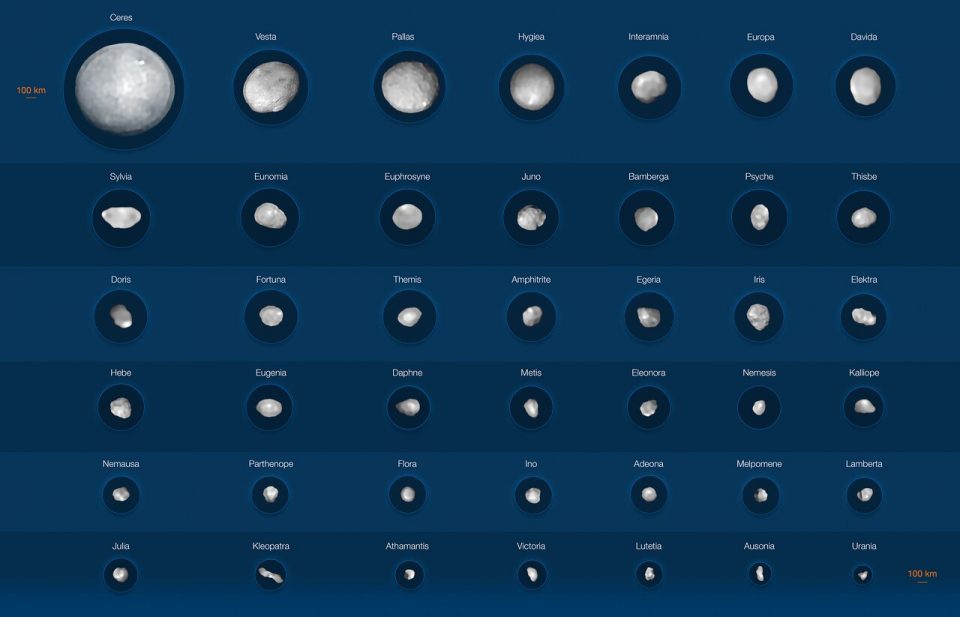
Asteroids can be very big or very small. The largest asteroid scientists know of, Vesta, is 329 miles across. That’s about as wide as the state of New York! There aren’t many asteroids that come close to being that big, though.
Medium-sized asteroids between a half mile and 60 miles wide are more common. Scientists estimate there are up to 1.9 million of them! There are asteroids that are smaller, more like the size of a house. They’re hard to spot, but scientists have found enough of them to know there must be more.
Because asteroids are relatively small and far away from Earth, scientists don’t always know how big they really are. To measure them, they use three methods:
- Use one of a handful of special telescopes powerful enough to take pictures of an asteroid directly
- Send a robotic probe out to an asteroid to take images of it
- Use measurements and models to estimate an asteroid’s size based on its temperature and brightness or how long it blocks out a star when it crosses in front of one.
Where Are Asteroids Found?
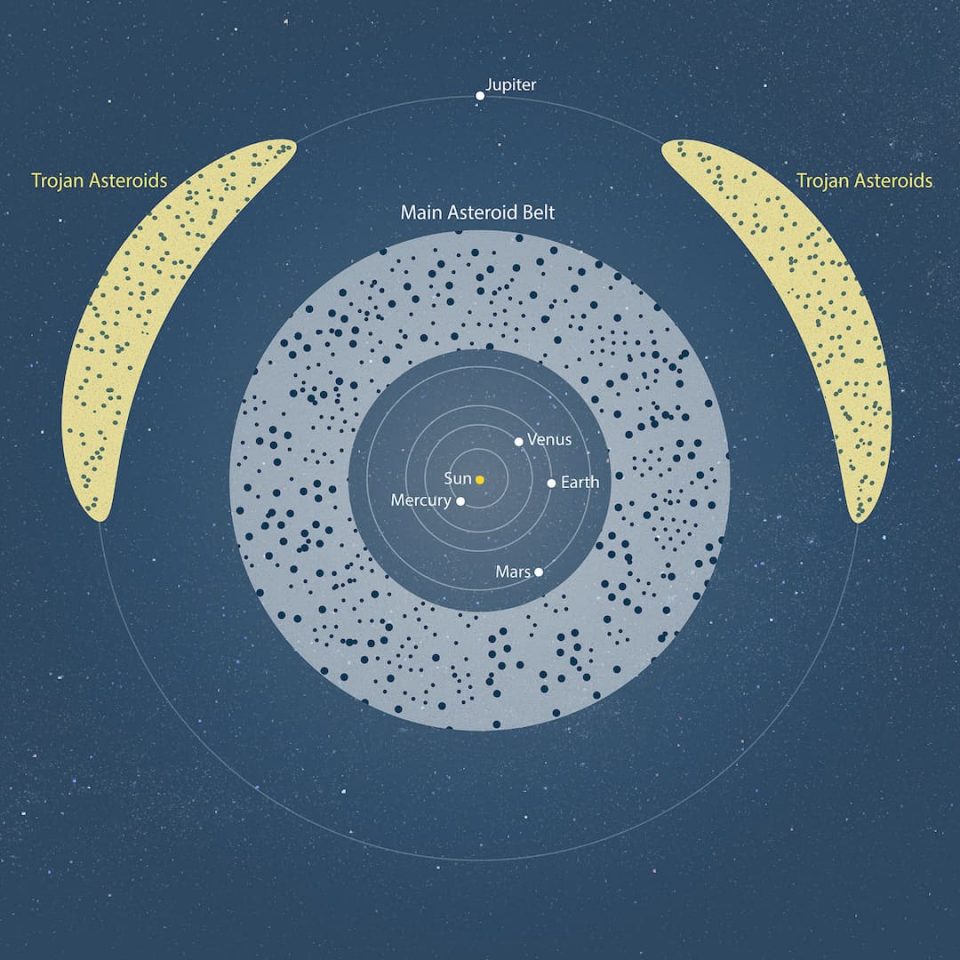
In our solar system, asteroids are found mainly in two areas: the asteroid belt between Mars and Jupiter, and special points around planets where gravity makes it easy for something to orbit in place.
The Asteroid Belt
When the solar system was forming, most of its rocky and metallic material turned into planets. But that didn’t happen in the space between Jupiter and Mars. Jupiter is so big that its gravity got hold of big lumps of rock and metal nearby and sped them up. They were going so fast that they didn’t bump into one another gently and combine. Instead, they blew up into big chunks, creating the asteroid belt.
Lagrange Points
There are five special places around each planet in the solar system where the planet’s gravity and the gravity of the Sun make it easy for a small object to orbit the Sun. Scientists call these Lagrange points, after the French mathematician who discovered them. Any object in one of those places moving at the right speed stays a fixed distance between the planet and the Sun, held in place by gravity and the force of its own motion.
Two Lagrange points around the Earth house satellites that study the Sun and deep space. But thousands of asteroids called Trojan asteroids float through space at Lagrange points around the solar system as well. Most of them are in front of or behind Jupiter, but there are asteroids around other planets too, including Earth!
Asteroid, Meteor, Dwarf Planet, or Comet?
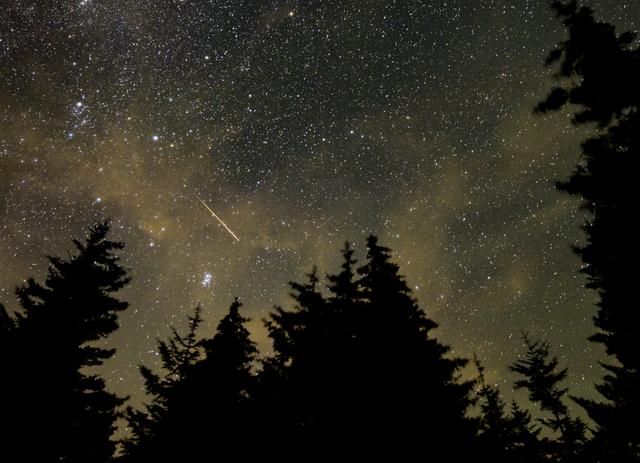
Sometimes it can be hard to keep track of the difference between an asteroid and a meteor, or the difference between an asteroid and a comet or dwarf planet. Scientists with the International Astronomical Union have established some pretty firm definitions for them though:
- A meteor is the light we see in the night sky when an object enters the Earth’s atmosphere. If an asteroid hit the Earth, it would create a meteor as it fell.
- A comet is made of rock combined with ice. Comets might orbit the Sun or only make a single trip through the solar system. They typically have bright tails made of gas formed as the Sun heats them up.
- A dwarf planet is an object large enough that gravity makes it round, but not so large that it either absorbs or flings away most other large objects in its orbit. It also must orbit the Sun.
- An asteroid is a rocky or metallic object that orbits the Sun. Unlike comets, asteroids do not have tails made of gas. And unlike dwarf planets, they’re not big enough for their gravity to make them round.
Together Time
We’re lucky that large asteroids don’t hit the Earth very often—the last time one did, it wiped out the dinosaurs! But if you live in or can travel to a place with a good patch of dark sky, it’s not too hard to spot a meteor shower with your family. Give it a try sometime and watch the brilliant display of tiny rocks from space burning up high in the sky!
